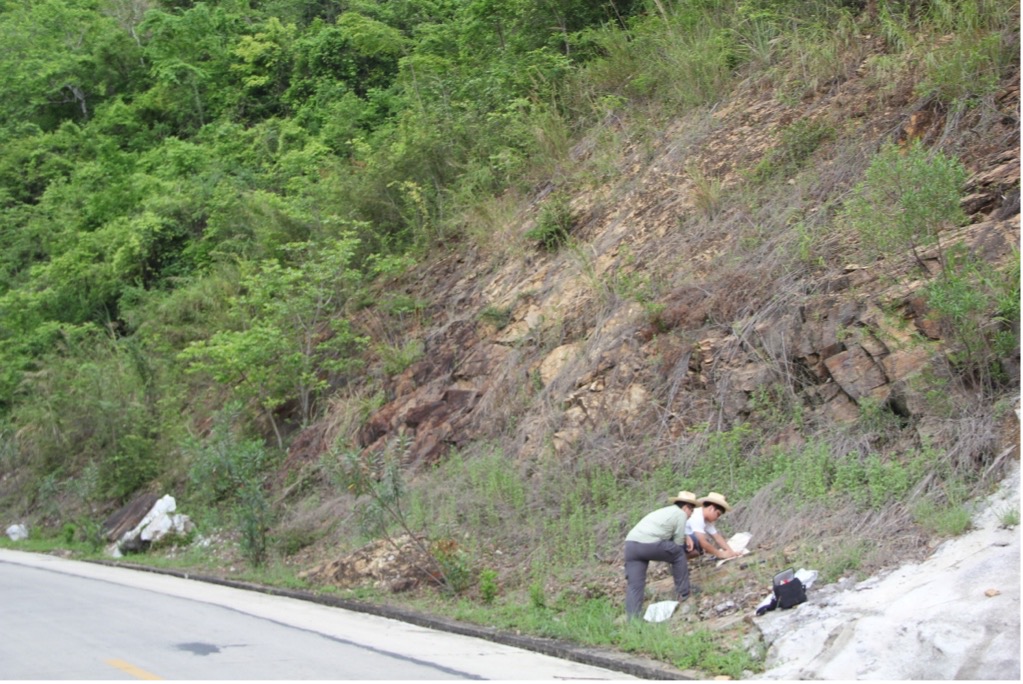Tuolie Fm
Type Locality and Naming
The Tuolie Fm was named by Guangdong Party of Regional Geological Survey in 1964 and published by Xia Bangdong and Lin Zhenpeng (1979). The type section is located in the upper reaches of Namu River, at Jiangbian, Dongfang Lizu Autonomous County, Hainan Province.
Synonym: (陀烈组)
Lithology and Thickness
The formation can be subdivided into three members as follows: the lower member, 565 m thick, consists of light gray, gray sericitic slate intercalated with a few of siliceous micritic limestone nodules or lenses; the middle member, 1010 m in thickness, is composed of black, dark gray carbonaceous sericitic slate intercalated with a few of carbonaceous siliceous slate; the upper member, 371 m thick, is characterized by bluish gray banded and lamellar sericitic slate. The total thickness of the formation is over 1879 m since the base of the formation is not exposed in the type locality (Figure).
[Fig. The meta-sandstone of Tuolie Fm at Daguangba section, Dongfang, Hainan Province (photography by Long Wenguo)]
Relationships and Distribution
Lower contact
No lower boundary of the group is observed.
Upper contact
The group is disconformably overlain by the Qingtianxia Fm of the Lower Carboniferous.
Regional extent
It is mainly distributed at Tuolie, Jiangbian in Dongfang Lizu Autonomous County, at Hekou in Qiongzhong Lizu Miaozu Autonomous County, at Hongyin in Changjiang (Shilu) Lizu Autonomous County, at Lanze in Danzhou City, at Huangtuzai in Qionghai City and at Dongling in Wanning County, in thickness of the group varying from 460-2000 m. It is over 3470 m in thickness at Hekou in Qiongzhong and 1300 m thick at Huangtuzai in Qionghai.
GeoJSON
Fossils
The lower member yields chitinozoa Conochitina cf. edjelensis, C. edjelensis-armillata Group; the middle member bears Conochitina cf. edjelensis, C. aff. iklaensis, etc. Both these two members comprise microflora Leiopsophosphaera solida, Microhystridtum oligum, Baltisphaeridium stipiforma,etc.
Age
Depositional setting
The formation of micro clastic sediments with flysch rhythmites belongs to a comparatively deep-sea facies of the continental shelf to continental margin.
Additional Information
